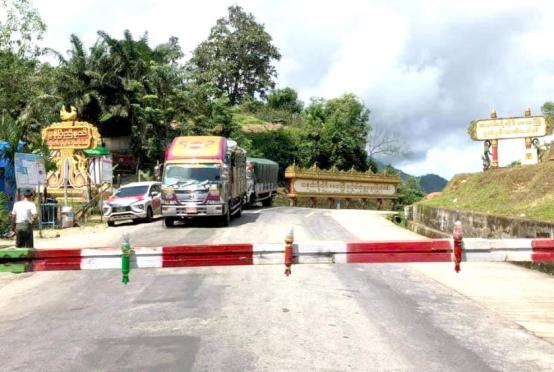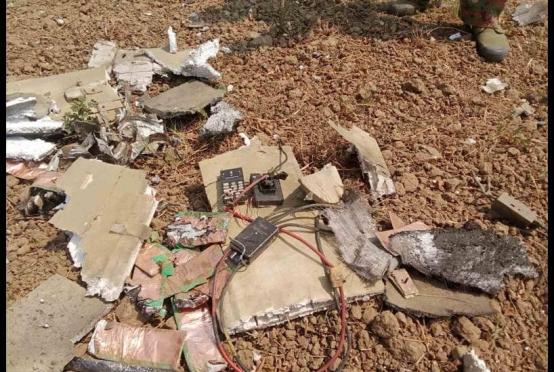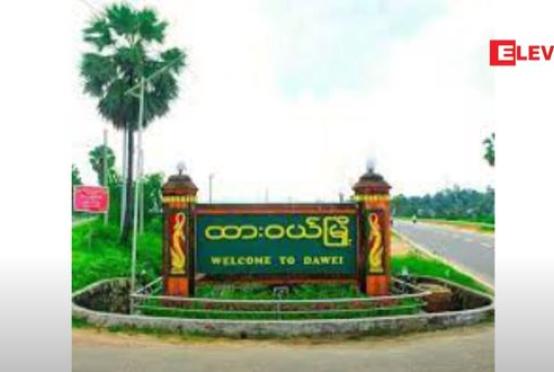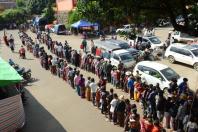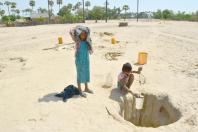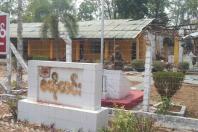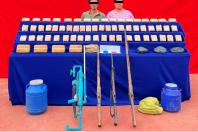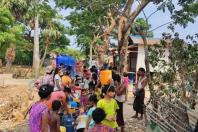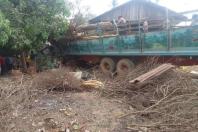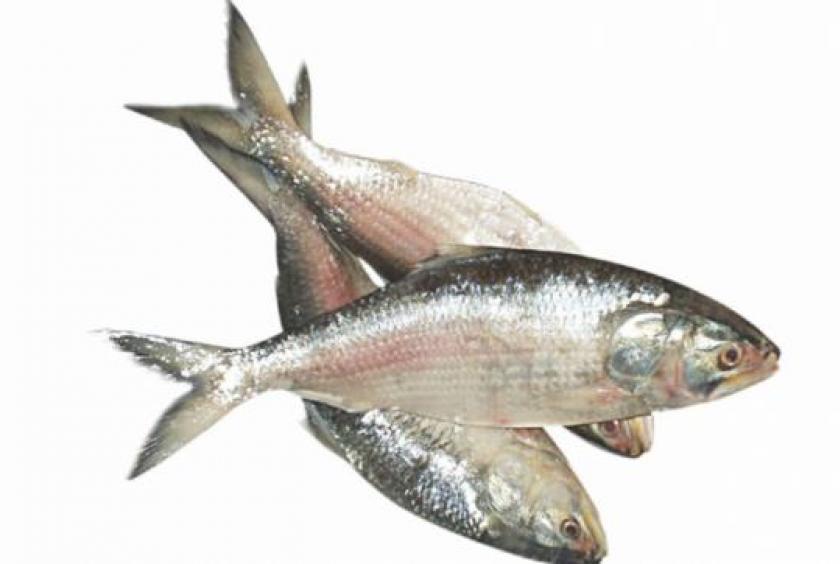
Dhaka (The Daily Star) - Environmental impact of coal-fired power plants nearby to hamper hilsa production
The government has approved multiple power projects near hilsa sanctuaries in Patuakhali coastal area, posing a threat to the breeding and nurturing of the national fish.
Experts fear that hilsa production may sharply decline due to the environmental consequences of three under-construction coal-fired plants, each having the capacity to generate 1,320MW of electricity.
The plants are being built near the major hilsa sanctuary between the Andharmanik River and Ramnabad channel in Dhankhali union of Patuakhali's Kalapara upazila. One of them may start generating electricity this April.
The 40km stretch of the Andharmanik serves as a major corridor for hilsa migration from the sea.
Experts say a large number of vessels carrying coal, possible oil spills, fly ash, and discharge of water used by the plants could seriously harm the plankton-rich waters where hilsa breed.
A ban on fishing hilsa during spawning season and jatka or the young hilsa for eight months a year had helped increase production several times in recent years. But experts believe that the power plants in the hilsa breeding grounds would undermine the government efforts.
“The power plants will greatly disturb the breeding and nurturing of hilsa, whatever safety measures they take regarding environment,” said Anisur Rahman, director of Bangladesh Fisheries Research Institute (BFRI), who has been researching on the national fish for years.
The quality of water is important as hilsa eats planktons in fresh water, he added.
“They have selected the sites and started construction of coal-fired power plants. But no one consulted us about the matter. These power plants will use a huge quantity of river water and coal-laden water transport will pollute the rivers.
“All the efforts government made to increase the production of hilsa could be pointless because of the power plants.”
North-West Power Generation Company Ltd is building a plant on 1,000 acres of land, Rural Power Company Ltd another on 915 acres and Ashuganj Power Station Company Ltd the third on 930 acres, said Mamunur Rashid, additional deputy commissioner (revenue) of Patuakhali.
Besides, 1,075 acres of land have been acquired for another plant in the same area. It will be built by Sena Kalayan Sangstha, he added.
North-West is likely to start generating 660MW by April and an additional 660MW by October, he added.
Arif Azad, former director general of Department of Fisheries, who retired last March, said considering the characteristics of the hilsa, it is not difficult to say that those power plants would have a negative impact on the fish.
Those sanctuaries are the migration routes of hilsa. As per the law, all kinds of intervention are prohibited there, he said.
He added that the environment ministry did not contact the fisheries department before issuing the environment clearance certificates to the power plant companies.
Contacted, Nasrul Hamid, state minister for power, energy and mineral resources, said, “The government has made a policy about the power plants, and the companies that sought permission following the policy guidelines got the go ahead for their projects.”
“Our job is to promote power generation. You better talk to the environment ministry.”
Waterkeepers Bangladesh, a regional entity of Waterkeeper Alliance, and Bangladesh Paribesh Andolon (Bapa) jointly conducted a research on the effects of these infrastructures on environment, including water bodies, in April last year.
Sharif Jamil, Waterkeeper's Bangladesh representative, said this area in Patuakhali is known as the hilsa hub. The area produces hilsa worth Tk 4,000 crore a year and it is increasing.
Thousands of people involved in this trade could lose livelihood if fish production drops due to water pollution caused by the power plants, he added.
The area chosen for the projects is fragile as land formation and erosion is common in that part of the coast. The entire development plan in the southern part of the country requires a comprehensive Strategic Environmental Assessment (SEA), their research report said.
According to another research jointly carried out by Bangladesh Fisheries Research Institute and UK-based International Institute of Environment and Development (IIED), the Kalapara and Kuakata areas are crucial for hilsa breeding.
“Hilsas lay eggs in these areas and hilsa fries stay there until becoming jatka. Later on, they go into the deep sea,” said their report of 2014.
The areas are considered “food stock areas” for the fish and are pollution-free, added the report.
The Centre for Environmental and Geographic Information Service (CEGIS), a public trust under the Ministry of Water Resources, in 2017 conducted a study on the environmental impact of the coal-based plant of North-West Power Generation Company.
According to the study, the plant would burn at least 48 lakh tonnes of coal a year and produce 1,000 tonnes of ash.
At least 4,200 square metres of water would be pumped out of the Ramnabad channel every day and after use, the hot water would be discharged back into the channel, states the report.
The environmental impact assessment report of CEGIS said vessel movement should be limited during hilsa (September-October) and pangas (June-July) spawning and shrimp collection (February-March). That's half the year.
It suggested checking ballast water and oil spilling by the vessels.
The three coal-fired projects have been taken up centring on the Payra power plant.
AHM Rashed, assistant director of the Department of Environment in Barishal, said, “The Payra power plant authority had submitted an Environmental Feasibility Study Report for environmental clearance and we approved it.”
The kind of effect a power plant could have on the fish could best be said by the fisheries department, he added.
A Department of Fisheries official on condition of anonymity said the ministry was going to conduct a study from this month to find out the impact of the power plants on hilsa.
Director General Sultan Ahmed of the environment department said the “conditional” environment clearance certificates for the plants were issued following the environmental impact assessment. He said movements of vessels carrying coal have to be controlled during the breeding seasons of the fish.
Zargis Talukder, assistant engineer for North-West Power Company, said, “We will not discharge hot water into the river. But we will purify it with cooling machines for re-use, including drinking purposes.”
The ash that would be produced will be stored in a separate yard so that it could be sold to brick kilns for making better bricks, he added.
“Fly ash would be sold to cement factories; no fly ash would make its way into the water body as we will spray water on it continuously.”
Meanwhile, the government is considering setting up a nuclear power plant next to another hilsa sanctuary in Barisal.
An official from Bangladesh Atomic Energy Commission said they considered four sites for the second nuclear project after Rooppur. Primarily, they chose 2,000 acres (8.1 square kilometres) on Char Megha, between Hizla and Mehendiganj on the Meghna, in Barishal.
This is the same area the government recently declared as the country's sixth hilsa sanctuary.
Fish meets around 60 percent of the country's annual protein demand. The annual production of hilsa, the geographical indicator (GI) for Bangladesh, has increased from 1.99 lakh tonnes to 4.96 lakh tonnes in 2016-17.
Hilsa accounts for 12 percent of the total fish production in Bangladesh and has a market value of about Tk 17,000 crore a year or one percent of the GDP.
https://www.thedailystar.net/frontpage/news/hilsa-habitats-under-threat-...


